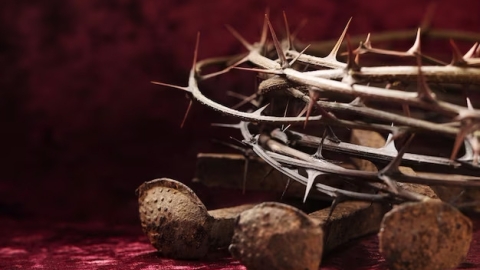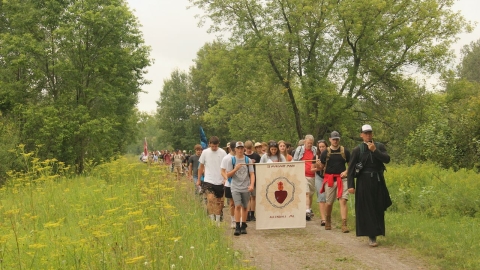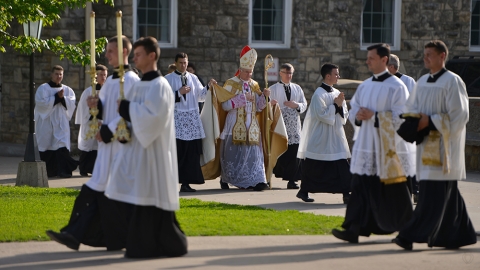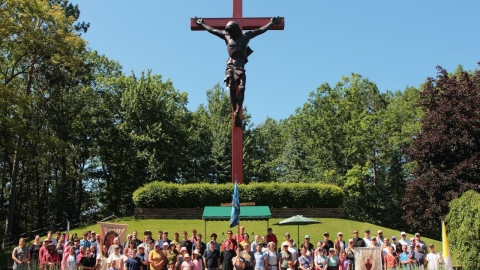Queen of the May: St. Joseph's Crowns Our Lady

The month of May is dedicated to the Mary, whom we celebrate as Queen of Heaven on the last day of this month. On the first Sunday in May, the statue of the Virgin Mary in the sanctuary was crowned with a wreath of flowers, and bouquets were laid at her feet.
Many families also crown statues in their homes with flowers for the entire month of May. If you don't have a statue of Our Lady, you can place flowers around a picture of her.
In Eastern churches, the crowning Mary was associated with adding ornamentation to an icon of Mary, sometimes as simple as adding additional gold trim. Perhaps in homage to this, Pope Clement VIII added two crowns to the icon of Mary with the Infant Jesus in the Basilica of Saint Mary Major in Rome. The crowns were eventually lost, but were replaced by Gregory XVI in 1837 in a rite that was to become the standard practice for Crowning.
Parishes and private groups often process and crown an image of the Blessed Virgin Mary with flowers. This often is referred to as a “May Crowning.” This rite may be done on solemnities and feasts of the Blessed Virgin Mary or on other festive days, and offers the Church a chance to reflect on Mary’s role in the history of salvation. In some countries, this takes place on or about May 1 or, in many United States parishes, it takes place on Mother's Day.
The custom fell out of practice in many places following Vatican II, but has since made a comeback along with many other traditional Catholic practices. Today, May Crownings occur in many Roman Catholic parishes and homes with the crowning of a statue of Mary. There is considerable flexibility regarding the rite, and it can be adapted to many different circumstances and situations depending on whether the crowning is done in a parish, a school or classroom, or even in the family. The rite may consist of hymns, prayers, and perhaps an act of consecration to Our Lady. The climax of the celebration is the moment when the one of those present places a crown of flowers on Mary's head accompanied by a traditional hymn to the Blessed Mother. The ceremony usually takes place with young girls dressed intheir Sunday best carrying flowers (traditionally hawthorn) to adorn the statue. One of the girls (often the youngest) carries a crown of flowers or an actual golden crown on a cushion for placement by the May Queen (often the oldest girl) on the statue.






